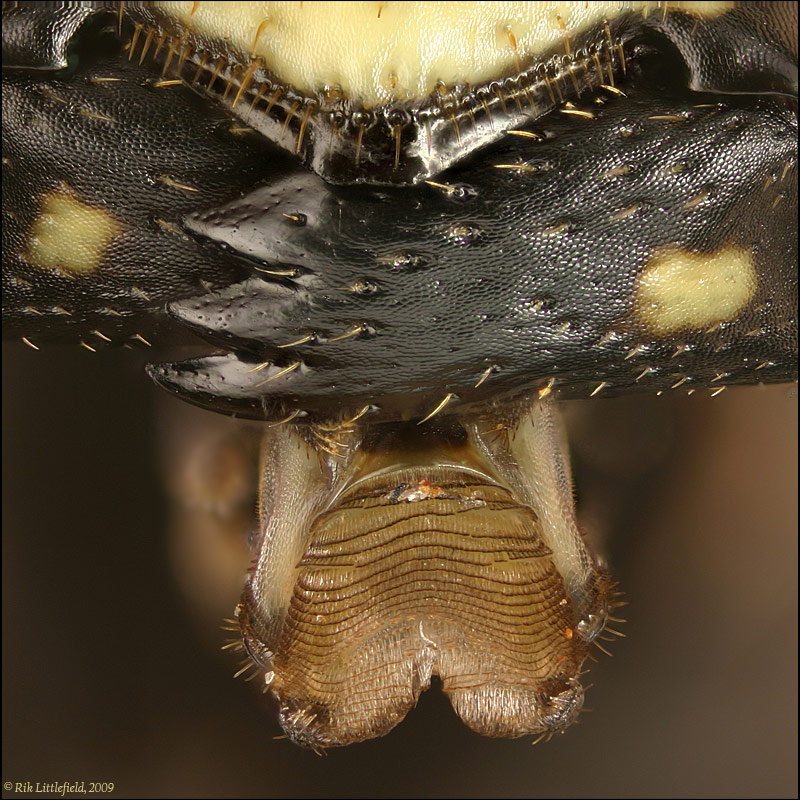
These are the mouthparts of a paper wasp, Polistes dominulus. I have written about these wasps before. You can find the postings by searching for polistes AND dominulus.
To refresh your memories, these things are a European species that immigrated to the eastern US in the 1970's and reached my area in the Pacific Northwest perhaps 10 years ago. They're doing a pretty good job of shutting out the native species. As much as I dislike the concept of introduced invasives, these particular critters are really pretty nice. Their distinguishing feature is that they are remarkably docile.
This particular specimen came from an unfortunate incident a couple of days ago in which my neighbor started to dismantle a fence that housed a large nest of these things.
You can predict how this story is going to play out, of course.
But you'll be wrong.
In fact, the fellow brushed off a number of the wasps before he realized what was going on. Then he beat a hasty retreat, returned with a can of spray insecticide, and did his level best to soak everything in the vicinity, surrounded by a small cloud of buzzing wasps. A recipe for disaster, yes? And so it was...for the wasps. My neighbor received no stings at all, not a single one. I confess, I find this not only bizarre, but a bit saddening. It seems unfair, somehow.
Oh well, that's the way life is sometimes. At least I got an interesting specimen.
I'm always fascinated by the textures of these things. Besides, I needed to photograph something -- I've been spending way too much time at my computer lately!
--Rik
Technical: Canon 300D, Nikon CF N Plan Achro 10X NA 0.30 objective on 170 mm extension, 90 frames at 0.00033" focus step (8.5 microns), Zerene Stacker DMap plus minor retouching. Full frame height, cropped horizontally. Dual fiber halogen illuminator with pingpong ball diffuser, 0.3 seconds @ ISO 100.
